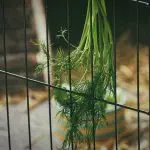Kava tea, a traditional herb from Pacific Island cultures, gains modern popularity as a natural anxiety reliever (kratom super green). Science identifies kavalactones for their interaction with brain neurotransmitters, promoting calmness and stress reduction. Beyond relaxation, kava enhances social interactions and overall well-being. Kratom Super Green, derived from Mitragyna speciosa, offers potent anxiety relief through opioid receptor interaction. Kava tea's cultural significance in Pacific Islands is being recognized globally for its holistic wellness benefits, with safe use guidelines emphasizing small doses, hydration, and high-quality sourcing.
“Unwind and embrace tranquility with Kava Tea, an ancient herbal remedy gaining modern popularity for its remarkable relaxation and anxiety-relieving properties. This traditional beverage, steeped in history, offers a natural alternative to combat stress. In this comprehensive guide, we explore the power of Kava and its close relative, Super Green Kratom, delving into their mechanisms, cultural roots, and safety considerations. Discover how these herbal wonders can enhance your well-being.”
- Unraveling Kava Tea: The Ancient Herbal Remedy for Modern Times
- Super Green Kratom: A Potent Blend for Anxiety and Stress Relief
- How Kava Works Its Magic: Understanding the Science Behind Relaxation
- Exploring the Cultural Significance and Traditions Associated with Kava
- Navigating Consistency and Safety: Dosing and Potential Side Effects
Unraveling Kava Tea: The Ancient Herbal Remedy for Modern Times

Kava tea, an ancient herbal remedy, has been a staple in Pacific Island cultures for centuries, known for its calming effects and ability to promote relaxation. Derived from the roots of the Piper methysticum plant, this traditional brew is gaining modern popularity as a natural alternative for anxiety relief. Often referred to as the “kratom super green,” kava tea has gained traction in today’s wellness scene due to its potential benefits without the side effects associated with prescription medications.
The unique composition of kava includes various compounds, such as kavalactones, which are believed to interact with neurotransmitters in the brain, influencing mood and reducing stress. This natural herb has been traditionally used not only for its soothing properties but also for its ability to enhance social interactions and well-being. With its rich history and emerging scientific interest, kava tea offers a promising path towards managing anxiety in a holistic and herbal manner.
Super Green Kratom: A Potent Blend for Anxiety and Stress Relief

Kratom, a herb native to Southeast Asia, has gained popularity for its potential anxiety-relieving properties, especially in its Super Green variety. This potent blend is made from the dried leaves of the kratom plant (Mitragyna speciosa) and offers a unique approach to managing stress and promoting relaxation. Unlike traditional herbal teas, Super Green Kratom provides a more intense experience due to its high concentration of active compounds.
The key to its effectiveness lies in the presence of mitragynine, the primary alkaloid responsible for most of kratom’s effects. This compound interacts with opioid receptors in the brain, offering a soothing and calming sensation without the euphoria often associated with opioids. Super Green Kratom is known for its fast-acting properties, providing users with a sense of tranquility and peace within minutes of consumption. It can be a game-changer for folks seeking an all-natural alternative to manage anxiety and find respite from daily stress.
How Kava Works Its Magic: Understanding the Science Behind Relaxation

Kava tea, derived from the root of a plant native to the Pacific islands, has been used for centuries in traditional medicine practices. Its effectiveness as a relaxation aid is backed by modern science, revealing the intricate mechanisms behind its calming effects. The key lies in kava’s unique chemical composition, particularly the compounds called kavain and methysticine, which are responsible for its soothing properties.
These compounds interact with the body’s natural neurotransmitters, such as GABA (gamma-aminobutyric acid), known for its calming effects on the nervous system. By enhancing GABA activity, kava tea promotes a sense of tranquility and relaxation, helping to alleviate anxiety and stress. Additionally, research suggests that kava may have anti-inflammatory properties, further contributing to its ability to create a state of comfort and ease. This natural herbal drink offers a peaceful alternative for those seeking relief from everyday worries, especially in comparison to other stimulants or synthetic relaxants, providing a gentle yet effective approach to calming the mind and body.
Exploring the Cultural Significance and Traditions Associated with Kava

Kava tea, derived from the root of the Piper kava plant, holds a profound cultural significance in many Pacific Island communities. Historically, it has been used for centuries as both a social and ceremonial beverage, fostering connections within communities and serving as a central element in traditional gatherings. The preparation and consumption of kava are deeply rooted in cultural practices, with specific rituals and ceremonies surrounding its use.
In these societies, kava is often seen as more than just a drink; it represents hospitality, respect, and well-being. The process of making kava involves careful preparation and blending, resulting in a calming and soothing effect. As a natural herbal remedy, it has gained popularity worldwide for its potential to promote relaxation and anxiety relief, making it a popular alternative to modern stress management methods. With growing interest in holistic wellness, the cultural importance of kava is being recognized globally, even as modern variations like kratom super green blends gain traction among those seeking natural solutions for calm and clarity.
Navigating Consistency and Safety: Dosing and Potential Side Effects

Navigating consistency and safety in incorporating kava tea, or Kratom Super Green, into your routine is essential for reaping its relaxation and anxiety-relieving benefits while ensuring a safe experience. Dosing plays a crucial role; starting with smaller amounts allows you to gauge your sensitivity and tolerance. Typically, 1-2 grams of dried kava root powder steeped in hot water for 10-15 minutes is a good starting point. However, individual responses can vary, so it’s important to listen to your body.
Potential side effects are generally mild but worth considering. Some users report minor digestive issues or a sedative effect, especially when consuming larger doses. To avoid these, stay hydrated, maintain a balanced diet, and be mindful of the time of day you drink kava tea. As with any herbal supplement, consistency in sourcing and preparation is key. Opting for high-quality, organic kava root ensures purity and potency, enhancing both the safety and effectiveness of your relaxation ritual.
Kava tea, an ancient herbal remedy, has gained modern popularity for its effective relaxation and anxiety-relieving properties. As we’ve explored, both Kava and Super Green Kratom offer natural solutions for managing stress and promoting mental well-being. Understanding the science behind their effects, appreciating their cultural significance, and navigating safety guidelines ensure a responsible and beneficial experience. Whether seeking calm or a boost in focus, these herbal drinks provide promising alternatives for those looking to reduce anxiety naturally.






